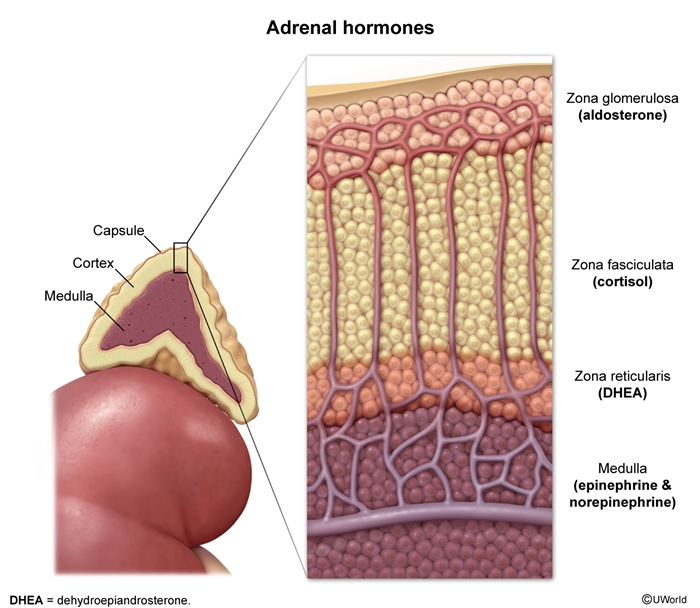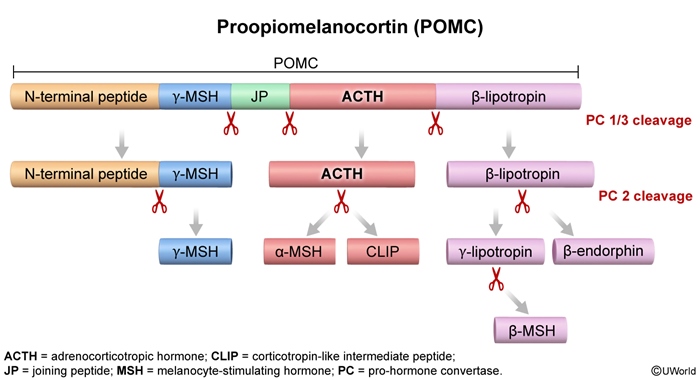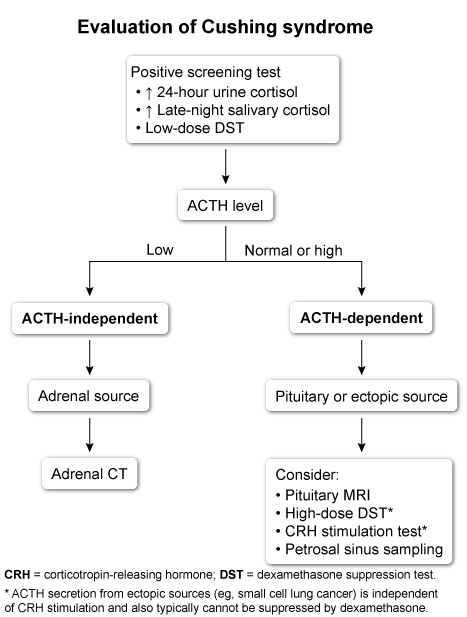Cushing Syndrome
Article Sections
Introduction
Cushing syndrome (hypercortisolism) reflects prolonged exposure to elevated systemic glucocorticoid levels. It can be categorized by whether it is due to excess adrenocorticotropic hormone (ACTH) secretion (ie, ACTH-dependent Cushing syndrome) or to autonomous, unregulated cortisol production (or exogenous glucocorticoids) (ie, ACTH-independent Cushing syndrome). Etiologies include:
- ACTH-dependent Cushing syndrome: ACTH-secreting pituitary adenoma (Cushing disease), ectopic ACTH production
- ACTH-independent Cushing syndrome: autonomous adrenal cortisol production (eg, adrenal adenoma, carcinoma), exogenous glucocorticoid administration
Hypercortisolism has widespread detrimental effects in multiple organ systems that can significantly impair quality of life and long-term health outcomes.
Pathophysiology and pathology
Cortisol is normally produced in the zona fasciculata of the adrenal cortex (Figure 1). Production is regulated primarily by ACTH from corticotroph cells of the pituitary.
Continue Learning with UWorld
Get the full Cushing Syndrome article plus rich visuals, real-world cases, and in-depth insights from medical experts, all available through the UWorld Medical Library.
Figures



